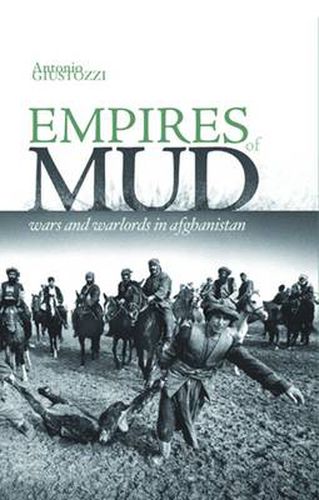Readings Newsletter
Become a Readings Member to make your shopping experience even easier.
Sign in or sign up for free!
You’re not far away from qualifying for FREE standard shipping within Australia
You’ve qualified for FREE standard shipping within Australia
The cart is loading…






Warlords are charismatic military leaders who exploit weak central authorities in order to gain control of sub-national areas. Notwithstanding their bad reputation, warlords have often participated in state formation. In Empires of Mud Giustozzi analyses the dynamics of warlordism in Afghanistan within the context of such debates. He approaches this complex task by first analysing aspects of the Afghan environment that might have been conductive to the fragmentation of central authority and the emergence of warlords and then accounts for the emergence of warlordism in the 1980s and subsequently. He accounts for the phenomenon from the 1980s to today, considering Afghanistan’s two foremost warlords, Ismail Khan and Abdul Rashid Dostum, and their political, economic, and military systems of rule. Despite the intervention of Allied forces in 2001, both of these leaders continue to wield considerable power. The author also discusses Ahmad Shah Massoud, whose ‘system’ incorporated elements of rule not dissimilar from that of the warlords. Giustozzi reveals common themes in the emergence of warlordism, particularly the role of local military leaders and their gradual acquisition of ‘class consciousness,’ which over time evolves into a more sophisticated, state-like, or political party-like, structure.
$9.00 standard shipping within Australia
FREE standard shipping within Australia for orders over $100.00
Express & International shipping calculated at checkout
Warlords are charismatic military leaders who exploit weak central authorities in order to gain control of sub-national areas. Notwithstanding their bad reputation, warlords have often participated in state formation. In Empires of Mud Giustozzi analyses the dynamics of warlordism in Afghanistan within the context of such debates. He approaches this complex task by first analysing aspects of the Afghan environment that might have been conductive to the fragmentation of central authority and the emergence of warlords and then accounts for the emergence of warlordism in the 1980s and subsequently. He accounts for the phenomenon from the 1980s to today, considering Afghanistan’s two foremost warlords, Ismail Khan and Abdul Rashid Dostum, and their political, economic, and military systems of rule. Despite the intervention of Allied forces in 2001, both of these leaders continue to wield considerable power. The author also discusses Ahmad Shah Massoud, whose ‘system’ incorporated elements of rule not dissimilar from that of the warlords. Giustozzi reveals common themes in the emergence of warlordism, particularly the role of local military leaders and their gradual acquisition of ‘class consciousness,’ which over time evolves into a more sophisticated, state-like, or political party-like, structure.